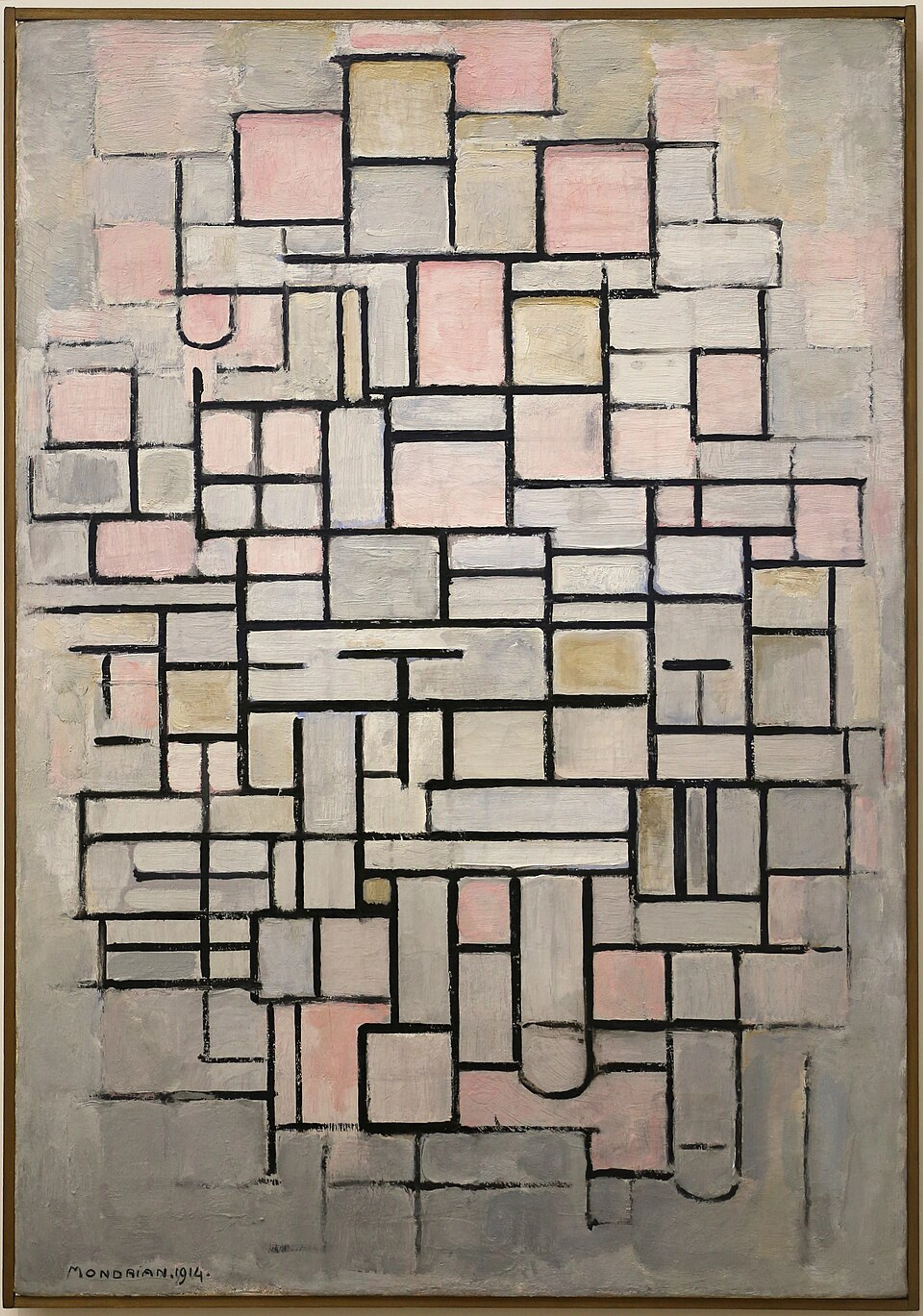
# Art Deco's Enduring Allure: From Roaring Twenties Glamour to Modern Art & Fashion
Dive into Art Deco's timeless glamour, bold geometry, and opulent materials. Discover its optimistic 1920s genesis, profound impact on modern fashion, architecture, and its surprising echoes in contemporary abstract art and interior design.
Art Deco's Enduring Allure: From Roaring Twenties Glamour to Modern Art & Fashion
What if a style from a century ago could still make you feel utterly modern and glamorous? I often find myself musing about what makes certain aesthetics truly timeless, a question that circles back to my own art. This isn't just a fleeting thought; it’s a deep dive into how an aesthetic born from a whirlwind of change—think post-World War I societal shifts, rapid industrialization, and the dawn of mass media—can hold such an unwavering grip on our imaginations. For me, that’s Art Deco. It's not just a historical movement; it's an enduring mood, a design philosophy that keeps popping up in the most delightful places, from the runway to the living room. It's a visual embrace of a hopeful future, born from a desire for progress and rebuilding after a period of immense global upheaval—a sentiment that remains potent even a century later. And honestly, who could resist its charms? So, let's dive into what makes Art Deco so enduring, from its vibrant historical roots and key influences to its pervasive impact on modern style, and how its spirit resonates even today, offering insights for artists and design enthusiasts alike. I ponder the impact of its streamlined forms, the bold geometry, and its audacious blend of luxury and modernity, and it feels like a silent character telling tales of optimism and glamour. It’s hard not to fall a little bit in love with a style that so confidently marries form and function, beauty and aspiration. Perhaps you'll find a piece of its magic in your own world by the time we're done here, maybe even inspiring your next creative adventure?
The Roaring Twenties & Art Deco's Genesis: A World Reimagined
To truly understand this enduring appeal, we must first journey back to its vibrant origins. Art Deco emerged from the vibrant, tumultuous, and profoundly optimistic period after World War I. While the world grappled with societal anxieties and disillusionment with traditional values, there was also an immense desire for escapism, pleasure, and a bold look towards a new, technologically advanced future. The economic boom of the 1920s, fueled by growing industrialization and consumerism, also played a crucial role, creating a new aspirational middle class keen to embrace modern comforts and luxurious aesthetics. This was the roaring twenties, a time of unprecedented societal shifts like the Jazz Age, women's liberation (including the fight for suffrage), and technological marvels such as radio, cinema, and the automobile, which accelerated daily life and offered new forms of entertainment. Mass media, from illustrated fashion magazines to cinematic newsreels, became a powerful conduit, disseminating Art Deco's sleek forms and glamorous lifestyle to a global audience, making it a truly international phenomenon. Design was ready to roar too, and this exuberance was particularly felt as Art Deco emerged in global centers like Paris, its birthplace, New York, with its iconic skyscrapers, and the burgeoning glamour of Miami Beach.
In Paris, the style found its initial voice at the 1925 Exposition Internationale des Arts Décoratifs et Industriels Modernes, which formally introduced the style to the world, solidifying the city's reputation as a global capital of luxury and artistic innovation, influencing haute couture, luxury goods, fashion, and the grand department stores like La Samaritaine. New York became synonymous with soaring Art Deco architecture, its boom directly fueled by a desire for verticality and modernity, giving us masterpieces like the Chrysler Building (designed by William Van Alen), the Empire State Building, and the Rockefeller Center (with contributions from Raymond Hood), whose stepped setbacks and elaborate ornamentation defined a new urban grandeur. Meanwhile, Miami Beach transformed into a pastel-hued playground, leveraging its identity as a glamorous leisure and resort destination, its South Beach Art Deco Historic District boasting hundreds of hotels and apartment buildings with characteristic curves, porthole windows, and marine motifs. Each city infused the style with its own local flavor, from Parisian haute couture to New York's monumental architecture.
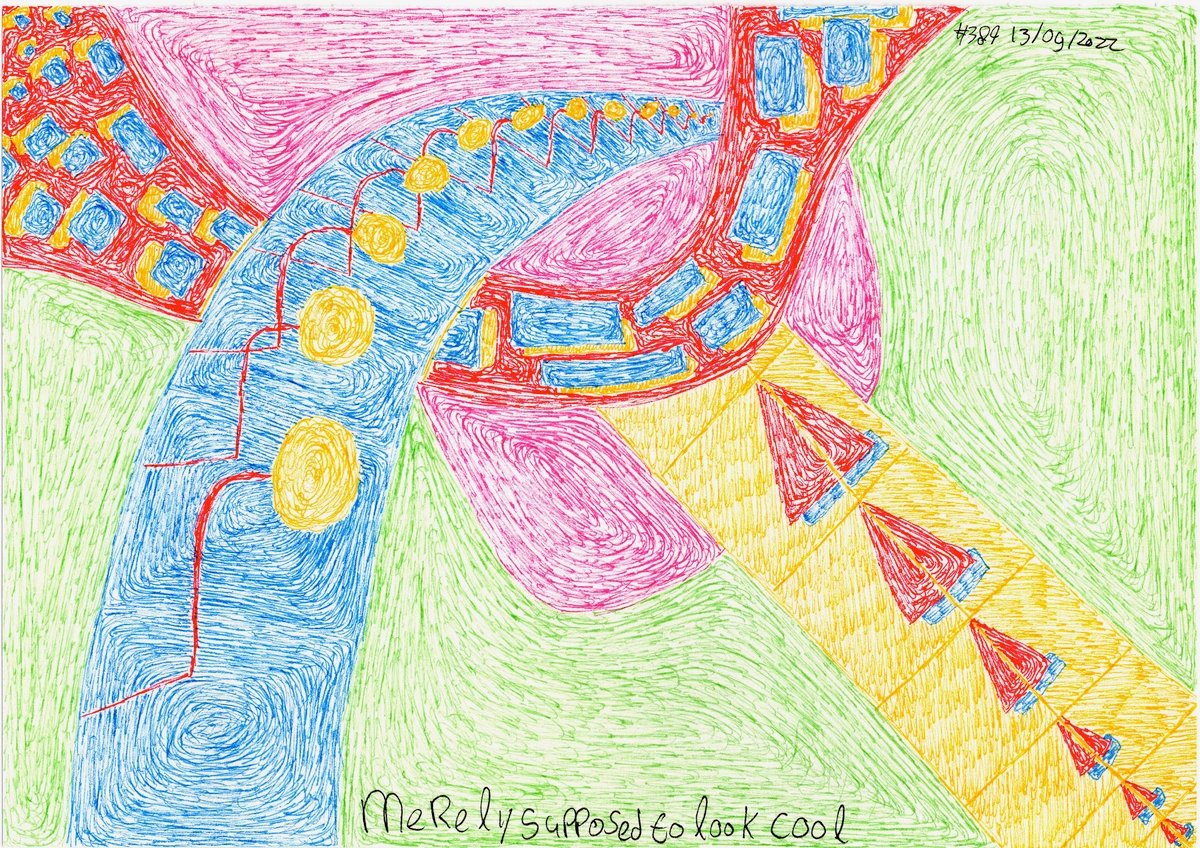
This new design language often drew inspiration from avant-garde movements like Cubism and Futurism. Think of Cubism's fragmentation, multiple perspectives, and geometric forms, which Art Deco boldly adapted into its signature angular motifs, stepped designs, and faceted surfaces seen not only in soaring skyscrapers but also in elegant furniture, jewelry, textiles, and even typography, creating a dynamic sense of dimension and breaking from traditional forms. Futurism, with its celebration of speed, technology, and dynamic movement, lent Art Deco its sleek, streamlined aesthetic, making objects appear aerodynamic even if they weren't. This wasn't just about aesthetics; it was a potent symbol of progress, efficiency, and the thrilling embrace of the machine age. For more on this, you might explore the impact of Futurism on modern art and design. This fusion created a style that was both luxurious and intensely modern—a forward-looking optimism rendered in bold lines and lavish materials.

The Language of Luxury: Glamour, Geometry, and Global Influences
So, we've touched upon its birthplace and influences, but what exactly is the secret sauce that makes Art Deco so undeniably luxurious and utterly captivating? At its core, Art Deco is a symphony of contrasting elements: sleek modernism meeting opulent decoration, geometric precision dancing with exotic motifs, and industrial efficiency embracing artisanal craftsmanship. It's a style that dares to be both sophisticated and playful, luxurious and streamlined—I always picture a grand ocean liner with its clean lines, yet lavishly adorned interiors. The audacity of this blend of luxury and modernity is what truly makes it captivating. It's like finding a meticulously crafted, perfectly balanced cocktail in a bustling, vibrant jazz club.
Geometric Precision & Streamlined Forms
When you see those bold, clean lines, the stepped forms (recalling ancient ziggurats or modern skyscrapers), sunbursts (symbolizing new beginnings and radiating energy), zigzags, and chevrons (suggesting movement and upward aspiration) – you're experiencing the unmistakable flair of Art Deco. These motifs weren't just decorative; they were deeply symbolic, embodying the speed, dynamism, and optimistic outlook of the machine age. They appeared everywhere from towering facades to intricate jewelry, textiles, and even the elegant lines of typeface, creating a visual language of progress.
Opulent Materials & Master Craftsmanship
Art Deco reveled in lavish materials like chrome, glass, mirrors, and highly polished exotic woods. Chrome symbolized the gleaming promise of the machine age and industrial modernity, its reflective surface embodying progress and innovation. Exotic woods like ebony, amboyna, and Macassar ebony, often combined with intricate marquetry and inlay work, spoke of rediscovered luxury, global exploration, and a break from traditional European materials. Glass, mirrors, and lacquered surfaces offered a sense of lightness, depth, and sophisticated sheen. This meticulous skill of artisans, evident in techniques like shagreen (sharkskin), lacquerware by Jean Dunand, verre églomisé (reverse-painted glass), and intricate metalwork by Edgar Brandt, truly brought these designs to life. Even Bakelite, a pioneering plastic, made an appearance, bringing a touch of accessible modernity to everyday objects, democratizing sleek design. I remember seeing an old black and white movie once, probably a classic from the era, and being utterly captivated by the set design. Every arch, every piece of furniture, every light fixture just sang Art Deco, effortlessly exuding confidence and a forward-looking spirit. It makes me wonder about the forgotten stories held within these gleaming surfaces.
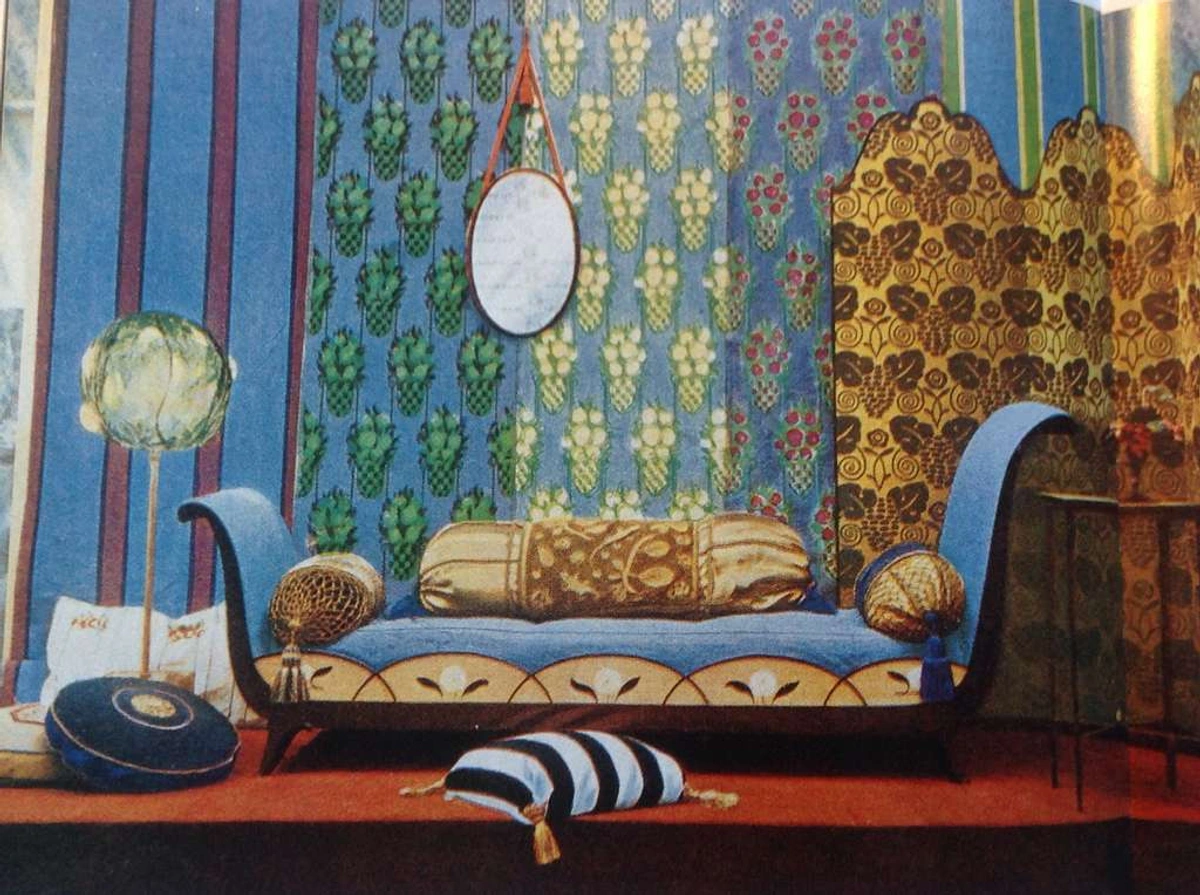
Exotic Echoes: From Ancient Egypt to Tribal Art
This era wasn't just about aesthetics; it was about a new way of life and a celebration of human ingenuity, drawing inspiration from across the globe. The sensational discovery of Tutankhamun's tomb in 1922 ignited a global obsession with ancient Egypt, leading to scarab motifs, lotus flowers, and stylized hieroglyphics appearing in jewelry, fashion, and interiors. But Art Deco's cultural tapestry was richer still, absorbing influences from various distant lands, creating a truly global aesthetic. It also assimilated elements from Mesoamerican cultures (Aztec and Mayan stepped patterns, often stylized and flattened into bold graphic motifs), African tribal art (often reinterpreted through Cubist lenses, transforming ritualistic forms into striking geometric abstractions), and Asian aesthetics (lacquerware techniques, stylized flora and fauna, often incorporated into intricate screens, furniture, and textiles). These influences were not merely copied but were filtered through a modern lens, seeking permanence and mystery in a rapidly changing world, resulting in a rich, eclectic visual language. Designers like Émile-Jacques Ruhlmann redefined luxury furniture with elegant, exotic woods and meticulous marquetry, crafting pieces that felt both timelessly artistic and functional. Painters like Tamara de Lempicka captured the era's sleek, confident women in bold, almost sculptural portraits, while graphic artists like Cassandre created iconic posters that epitomized Art Deco's sharp graphic sensibility and streamlined forms. It's a testament to the era's open-mindedness, don't you think?
Fashion's Liberated Silhouette: Art Deco on the Runway
But Art Deco wasn't just about grand buildings and luxurious interiors; it also had a profound impact on how we dressed, didn't it? The 1920s and '30s were revolutionary, particularly for women's attire. The societal shifts post-WWI, the growing independence of women, their increased participation in the workforce, and the burgeoning women's suffrage movement all contributed to a desire for freedom—and fashion quickly became a potent symbol of this liberation. The restrictive corsets gave way to looser, more liberating silhouettes, and Art Deco was right there, cheering them on. Fashion embraced the era's new functionality, but never at the expense of glamour. Imagine the sheer audacity of ditching centuries of sartorial constraint for something so utterly modern and chic! Think of:
- Sleek Lines: Dropped waists, straight silhouettes, and bias-cut gowns that celebrated the body's natural form rather than constricting it. Designers like Coco Chanel championed a simpler, more modern elegance, while Jeanne Lanvin created exquisite embroidered flapper dresses that flowed with movement. Even Paul Poiret, a pre-war couturier, adapted to the streamlined forms, and the iconic illustrations of Erté perfectly captured the era's dramatic flair. Jean Patou's sportswear, too, adopted streamlined forms, marrying comfort with undeniable chic for the active modern woman.
- Geometric Embellishments: Beading, embroidery, and prints that mimicked the architectural angles, stepped patterns, and sunburst motifs of Art Deco design. Flapper dresses, with their cascades of beads and fringe, were practically wearable sculptures, shimmering with every movement, like liquid light.
- Exotic Touches: Influences from ancient Egypt (like scarab motifs on jewelry and brooches), Aztec and Mayan art (stepped patterns in textiles, bold geometric prints), and Asian aesthetics (lacquerware aesthetics, stylized flora in fabrics, particularly in evening wear) appeared in jewelry, fabrics, and accessories. This fascination was fueled by sensational archaeological discoveries, sparking a global obsession with ancient motifs and luxury.
Even today, designers constantly revisit this era. You see it in the clean cuts of a tailored suit, the intricate patterns on a haute couture gown (think of Ralph Lauren's Jazz Age-inspired collections, the exquisite costuming in films like "The Great Gatsby," or the sophisticated lines in a Gucci, Prada, Erdem, or Marchesa collection, often featuring shimmering beadwork, bold architectural lines, or sleek, elongated silhouettes), or the dazzling statement jewelry that evokes the era's unparalleled sparkle. It's a style that always manages to look both retro and futurist simultaneously, which I find endlessly fascinating. It truly knows how to make an entrance, doesn't it?
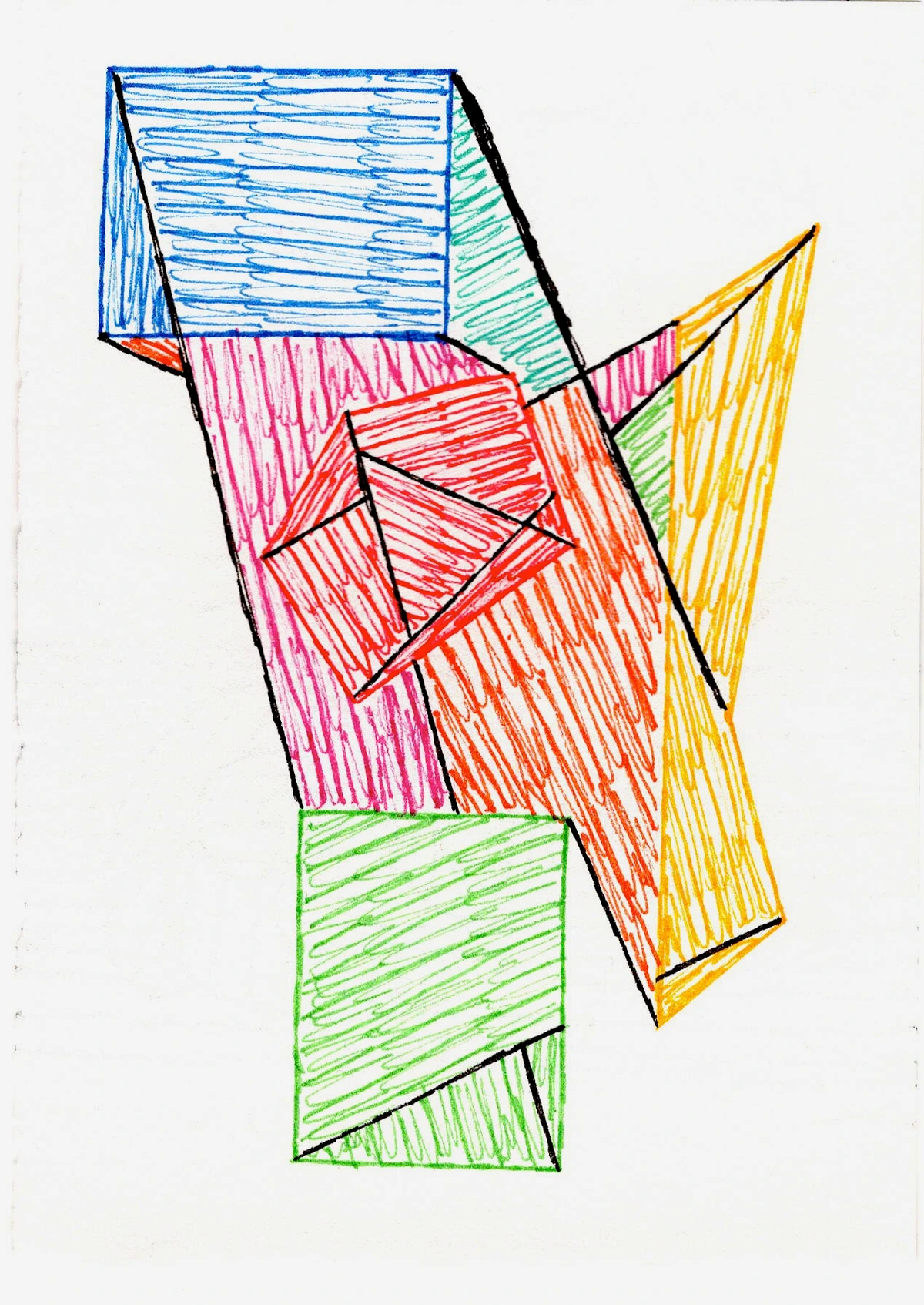
From Skylines to Everyday Objects: Art Deco's Enduring Imprint
Beyond fashion, Art Deco left an indelible mark on almost every aspect of design. Think about the iconic skyscrapers of New York City, the luxurious ocean liners (like the SS Normandie, a masterpiece of floating Art Deco design), the elegant furniture, and even everyday household items like streamlined radios, clocks (like the iconic Cartier Tank watches), cinema marquees, train stations (such as Union Station in Los Angeles), and the intricate covers of popular books. Its influence is so pervasive, you might not even realize you're looking at an Art Deco-inspired piece until you really pause and examine it. It’s a testament to its pervasive charm, isn't it?
Here's a breakdown of the Key Design Principles We Still See Today:
Principle | Art Deco Manifestation | Contemporary Relevance |
|---|---|---|
| Bold Contrast | Achieved through color (black and gold, vibrant hues) or material choices, creating drama. | Strong contrasts immediately draw the eye and create sophistication and energy in contemporary spaces, from minimalist interiors to striking graphic design. |
| Rich Materials | Highly polished metals (chrome, brass), exotic woods, glass, mirrors, intricate inlays. | Modern designers continue to use high-quality, tactile materials to convey luxury and craftsmanship, echoing Art Deco's material language and timeless appeal in luxury goods and bespoke interiors. |
| Streamlining | Making objects appear aerodynamic (cars, trains, appliances) to symbolize speed/progress. | The aesthetic of sleek, clean lines continues to define modern industrial design, from electronics (e.g., Apple products) to vehicles, reinforcing efficiency and modernity. |
| Symmetry & Repetition | A love for balance, rhythmic patterns, and stepped forms (zigzags, skyscrapers). | These principles provide a sense of order, calm, and grandeur, qualities sought after in contemporary minimalist and classic designs alike, offering timeless elegance and visual harmony, especially in architectural and interior compositions. |
Beyond these, Art Deco's influence stretched into the realm of everyday utilities. From the sleek lines of a vintage toaster to the robust elegance of early vacuum cleaners, and the distinctive fonts used in advertising, Art Deco brought a sense of aspirational modernity to mass-produced goods. It transformed mundane objects into mini-sculptures of optimism, making design accessible even if the materials weren't always exotic. It's truly fascinating how a style born of luxury could simultaneously democratize aesthetics, don't you think?

My Canvas, Its Echoes: Art Deco in Contemporary Abstract Art
These enduring principles not only shape our built environment and consumer goods but also find their way into the very fabric of artistic creation—a constant hum in the background of a painter's studio, perhaps even mine. For artists like myself, these principles often find their way into our work, consciously or unconsciously. My own appreciation for bold, clean compositions in my art is undoubtedly a subconscious nod to Art Deco's influence. There's something so satisfying about order and elegance that, despite my penchant for spontaneous expression, often manifests in structured ways. For instance, the way I integrate sharp geometric lines and strong contrasts in my own abstract paintings—sometimes a fanned-out motif, reminiscent of a sunburst, other times a stepped arrangement that dances across the canvas like a skyscraper facade—often feels like a direct echo of Art Deco's architectural precision and visual drama, a delightful contradiction between free-form emotion and ordered beauty. It’s not just about the shapes themselves, but the feeling of confident aspiration, of pushing forward while embracing beauty, that resonates deeply. It's almost as if my brushes are channeling the spirit of a 1920s architect, designing a skyscraper of pure emotion, one colorful block at a time. Do you ever find seemingly disparate influences converging in your own creative endeavors, or is it just me, seeing zigzags in my sleep? You can explore a bit of my artistic journey if you're curious about how these various influences converge in my work, much like the pieces you can find here, or perhaps discover more at the museum in 's-Hertogenbosch. Indeed, understanding composition in abstract art often involves a playful dance with geometry, a principle Art Deco mastered with such elegance. Maybe it’s my personal way of embracing that hopeful future, one brushstroke at a time. For a broader view of how movements like Art Deco fit into the larger narrative of artistic development, consider reading about the definitive guide to abstract art movements.
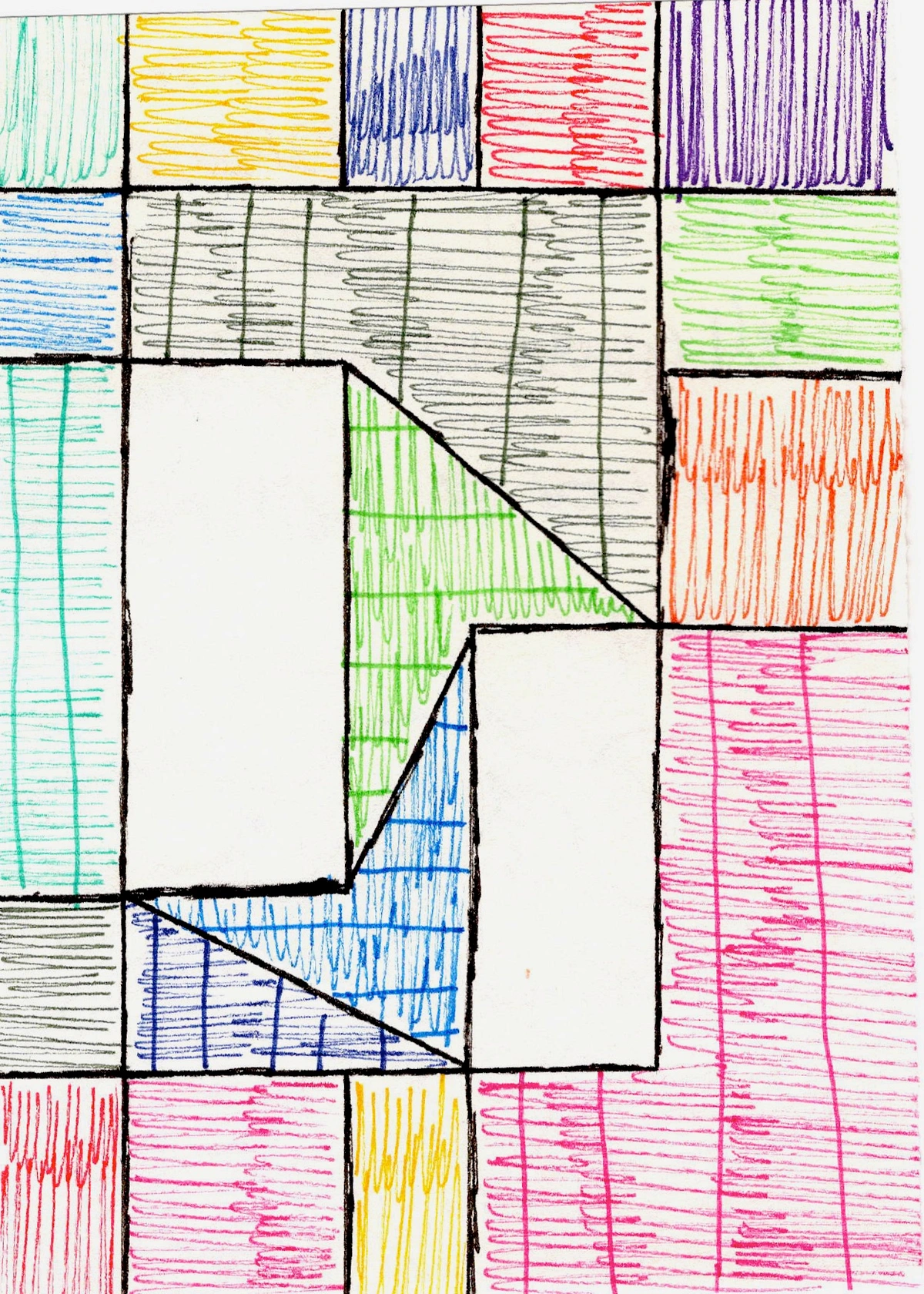
A Divergent Path: Art Deco and Mondrian's Geometric Visions
It’s fascinating how different artistic paths can spring from a shared appreciation for geometry, yet lead to vastly different expressions. Piet Mondrian's stark, geometric abstractions, while distinct from Art Deco, share a foundational appreciation for clean lines, basic shapes, and balanced composition. His work, like Art Deco, demonstrates the enduring power of geometric principles in conveying both order and emotion. However, their philosophies diverged significantly: while Art Deco embraced a luxurious dynamism, often drawing from diverse cultural influences for its decorative elements and celebrating the material world, Mondrian sought a universal harmony through purer, more fundamental forms, striving for spiritual purity through extreme reduction, completely eschewing ornamentation. It's a bit like comparing a grand, glittering ballroom to a serene, perfectly balanced zen garden – both beautiful, but with very different intentions and emotional registers. One wanted to dance in the glittering lights of possibility, the other sought the quiet, universal truth within the structure. Both profound, just… different artistic journeys, you know? It's a testament to the versatility of geometry in art.

The Ebb and Flow: Art Deco's Decline and Lasting Legacy
Like all movements, Art Deco eventually saw its popularity wane, though its influence never truly disappeared. The Great Depression, beginning in 1929, brought an abrupt end to the era of extravagant spending and optimism that had fueled Art Deco's rise. The desire for opulent, handcrafted luxury diminished as economic realities shifted towards more functional and accessible design. This led to the emergence of Streamline Moderne in the 1930s – a more pared-down, aerodynamic evolution of Art Deco that prioritized simplicity, smooth curves, horizontal lines, and mass production over lavish ornamentation, often seen in diners, buses, trains, and even humble household appliances. It was Art Deco's answer to austerity, a focus on sleek efficiency for a new era. By the end of World War II, tastes had shifted dramatically, paving the way for the clean lines and organic forms of Mid-Century Modernism. Yet, even in its decline, Art Deco had irrevocably shaped the aesthetic landscape, leaving behind a legacy that continues to inform and inspire generations of designers and artists. Its spirit simply refused to be relegated to history books, always finding a way back into our collective consciousness.
Why Does Art Deco Endure? My Enduring Theories
This is the million-dollar question, isn't it? Why, nearly a century later, does Art Deco continue to captivate us? I have a few theories, born from my own ponderings, perhaps slightly skewed by my artistic bias, but aren't all good theories a little biased?
- Optimism Personified: In a world that often feels chaotic and uncertain (and let's be honest, that's often), Art Deco represents a powerful moment of unbridled optimism and a fervent belief in progress, a stark contrast to the disillusionment that followed World War I. It was a style for a new, aspirational middle class as well as the elite, representing a clean break from Victorian austerity. While some might argue its opulence was a form of escapism from post-war anxieties, it was a beautiful, collective dream of a hopeful future that feels surprisingly poignant today. It's the visual equivalent of a deep, collective sigh of relief and a confident stride forward into the unknown.
- Harmonious Blend: It perfectly balances luxury with functionality, tradition with modernity. Consider how a sleek, chrome-plated object designed for industrial efficiency could be adorned with opulent, handcrafted details. It's neither overly austere nor excessively fussy, striking a sweet spot of refined elegance that just feels right. It's the design equivalent of a perfectly tailored suit that's also incredibly comfortable – utterly chic without trying too hard, yet undeniably impactful.
- Versatile Aesthetic: Its core principles – geometry, symmetry, strong lines – are incredibly adaptable. They can be bold and dramatic or subtly sophisticated, fitting into a myriad of contemporary contexts. It's like a perfectly tailored classic suit; you can dress it up or down, and it always looks good. I find this adaptability utterly fascinating, almost like a secret language that designers keep whispering to us through the decades.
- A Touch of Glamour: Let's face it, we all crave a bit of sparkle and sophistication now and then, don't we? Art Deco delivers that without feeling ostentatious. It's the kind of glamour that makes you feel a bit more fabulous just by being in its presence. And really, who doesn’t want to feel fabulous, even if it's just for a moment, admiring a beautiful object or painting? It offers a sophisticated escapism, a brief, glittering pause from the everyday.
- Theatricality and Aspirational Living: Art Deco isn't just a style; it's a stage set for a glamorous life. It's intrinsically linked to the golden age of Hollywood, luxury travel, and the sophisticated allure of the urban landscape. It promises a life of elegance, confidence, and a little bit of playful extravagance, all wrapped in visually stunning forms. Who doesn't want to feel like they're walking onto a movie set, even just for a moment, sipping a perfectly mixed cocktail in an impeccably designed space?
It's like that favorite old coat you own; it never goes out of style because its impeccable tailoring and luxurious fabric were perfect to begin with, offering both comfort and undeniable flair. And perhaps, at a deeper level, it reminds us of humanity's enduring capacity for creativity and optimism, even after immense hardship.
Bringing Art Deco into Your World Today
Feeling inspired by Art Deco's enduring charm? Good! I think we all deserve a little more glamour in our lives. Incorporating elements of this iconic style doesn't mean transforming your home into a 1920s movie set (unless you want to, and if so, please send photos!). Instead, it's about drawing on its principles to add sophistication and flair. Here are a few ways I've seen it done, or even mused about doing myself:
- Embrace Geometric Accents: Start small with decorative items like sunburst mirrors, geometric-patterned cushions, or an angular lamp. Imagine a bold, stepped console table in your entryway, making an immediate statement. Even a piece of my own abstract art with its sharp lines and vibrant contrasts could subtly evoke the era's dynamism.
- Play with Rich Materials: Introduce elements of polished chrome, brass, or dark, lacquered wood. A side table with a mirrored top, or a sleek bar cart, can instantly elevate a space. Think about the tactile pleasure of running your hand over a polished surface.
- Strategic Lighting: Art Deco lighting is iconic. Look for pendant lights or sconces with frosted glass, geometric shades, or chrome details. The right light fixture isn't just illumination; it's a piece of sculptural art.
- Color Palette Revival: While black and gold are classic, don't forget the deep jewel tones (emerald green, sapphire blue, ruby red) often paired with cream or silver. Consider an accent wall in a rich, saturated color, or incorporate these hues through textiles and artwork.
- Furniture with Flair: If you're ready for a larger commitment, seek out furniture with clean lines, rounded edges, and plush upholstery. A velvet club chair or a tufted sofa can add that touch of sophisticated comfort.
It's all about finding that balance between modern simplicity and luxurious detail. A curated approach allows Art Deco's spirit to breathe in a contemporary setting, making your space feel both classic and utterly fresh. Go on, give it a try – you might surprise yourself with the results!
Frequently Asked Questions About Art Deco
Art Deco's influence continues to spark curiosity. Here are some common questions I hear and ponder myself, perhaps while sipping a martini in a vaguely Art Deco-inspired bar, if I'm feeling particularly fancy:
What are the main characteristics of Art Deco?
Art Deco is characterized by sleek, streamlined forms, bold geometric patterns (like zigzags, chevrons, and sunbursts), strong symmetry, and a preference for luxurious materials such as chrome, glass, mirrors, and polished exotic wood. It emphasized modernity, glamour, and an optimistic vision of the future.
How does Art Deco influence modern fashion?
Modern fashion draws from Art Deco's clean lines, dropped waists, and relaxed silhouettes, as well as its geometric patterns and opulent embellishments (beading, sequins). Contemporary designers like Tom Ford, Gucci, Prada, Erdem, and Marchesa frequently reference this blend of sophistication and daring in their sleek evening wear and intricate collections—think of the shimmering beadwork, bold architectural lines in a dress, or elegantly structured accessories. The style also conveys a sense of confident liberation and refined glamour, which designers continuously reinterpret for the modern woman. It's often seen in elaborate costuming in period films like "The Great Gatsby," bringing its sparkle to a new generation.
Where can I see Art Deco design today?
Art Deco is prevalent in architecture (e.g., the Chrysler Building in NYC, various buildings in Miami Beach, the Hoover Dam, restored theaters like Radio City Music Hall), interior design (furniture, lighting, decorative objects), and graphic design (posters, book covers). Its influence can also be seen in jewelry (e.g., Cartier, Tiffany & Co. heritage pieces), fashion accessories, industrial design (e.g., vintage radios, classic car grilles and hood ornaments, sleek kitchen appliances), public spaces like cinema lobbies and train stations, and even in film and advertising that seek to evoke a sense of vintage glamour or futuristic elegance.
Is Art Deco still popular?
Absolutely! Art Deco enjoys recurring revivals in fashion, interior design, and architecture, embodying a trend often dubbed "Newstalgia." Its timeless appeal lies in its ability to combine luxury with modern sensibility. Many contemporary designs subtly incorporate Art Deco elements, proving its enduring popularity and influence. Brands like Restoration Hardware, boutique hotels (especially those with a speakeasy vibe!), bespoke cocktail bars, and luxury packaging frequently feature distinct Art Deco lines and materials, showcasing its lasting charm. It just refuses to fade away, much to my delight, a persistent whisper of glamour through the decades.
A Final Reflection: The Undeniable Allure
As I wrap up my thoughts on Art Deco, I'm reminded that true style isn't about fleeting trends; it's about an inherent beauty and a resonance that transcends time. Art Deco isn't just a chapter in design history; it's a living, breathing influence that continues to inspire, delight, and remind us that elegance, innovation, and a touch of glamour will always have a place in our world. Its fearless blend of past and future is perhaps best exemplified in a soaring skyscraper that draws on ancient ziggurat forms but is clad in gleaming, modern chrome, or a streamlined yet ornately decorated ocean liner. It’s a design movement that truly mastered its aesthetic through this audacious fusion, delivering sophistication and wonder with every creation. So, the next time you're out and about, keep an eye out for that enduring sparkle – you might be surprised where Art Deco's timeless allure pops up next, perhaps even inspiring your own creative endeavors. For that, I'll always be a devoted fan, even if my own art tends to be a bit more... abstractly glamorous, sometimes with a quiet geometric whisper of the Roaring Twenties.




